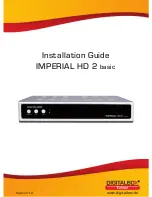
Servo Precautions
General Notes
W-1
• Do not lubricate servo gears or motors.
• Do not overload retract servos during retracted or
extended conditions. Make sure they are able to
travel their full deflection. Overloading or stalling a
servo can cause excessive current drain.
• Make sure all servos move freely through their
rotations and no linkages hang up or bind. A
binding control linkage can cause a servo to draw
excessive current. A stalled servo can drain a
battery pack in a matter of minutes.
• Correct any control surface “buzz” or “flutter” as
soon as it is noticed in flight, as this condition can
destroy the feedback potentiometer in the servo. It
may be extremely dangerous to ignore such “buzz”
or “flutter.”
• Use the supplied rubber grommets and brass servo
eyelets when mounting your servos. Do not over-
tighten the servo mounting screws, as this negates
the dampening effect of the rubber grommets.
• Ensure the servo horn is securely fastened to
the servo. Use only the JR
®
servo arm screws
provided; the size is different from other
manufacturers.
• Discontinue to use servo arms when they become
“yellowed” or discolored. Such servo arms may be
brittle and can snap at any time, possibly causing
the aircraft to crash.
• Check all related mounting screws and linkages
frequently. Aircraft often vibrate, causing linkages
and screws to loosen.
• Ensure your batteries have been properly charged
prior to initial flight.
• Keep track of the time the system is turned on so
you will know how long you can safely operate
your system.
• Perform a ground range check prior to the initial
flight of the day. See the “Daily Flight Checks
Section” for information.
• Check all control surfaces prior to each takeoff.
• Use frequency flags.
• Do not fly your model near spectators, parking
areas or any other area that could result in injury
to people or damage of property.
• Do not fly during adverse weather conditions.
Poor visibility can cause disorientation and loss
of control of your aircraft. Strong winds can cause
similar problems.
• Do not point the transmitter antenna directly toward
the model. The radiation pattern from the tip of the
antenna is inherently low.
• Do not take chances. If at any time during flight you
observe any erratic or abnormal operation, do not
resume flight until the cause of the problem has
been ascertained and corrected. Safety can never
be taken lightly.
Radio controlled models are a great source of pleasure. Unfortunately, they can also pose a potential hazard if not
operated and maintained properly.
It is imperative to install your radio control system correctly. Additionally, your level of piloting competency must be high
enough to ensure that you are able to control your aircraft under all conditions. If you are a newcomer to radio controlled
flying, please seek help from an experienced pilot or your local hobby shop.
Safety Do’s and Don’ts for Pilots
Содержание X9503 2.4
Страница 43: ...A 56...
Страница 103: ...S 68...
Страница 107: ...2010 Horizon Hobby Inc 4105 Fieldstone Road Champaign IL 61822 USA 877 504 0233 www horizonhobby com Printed 11 09 16661...




































